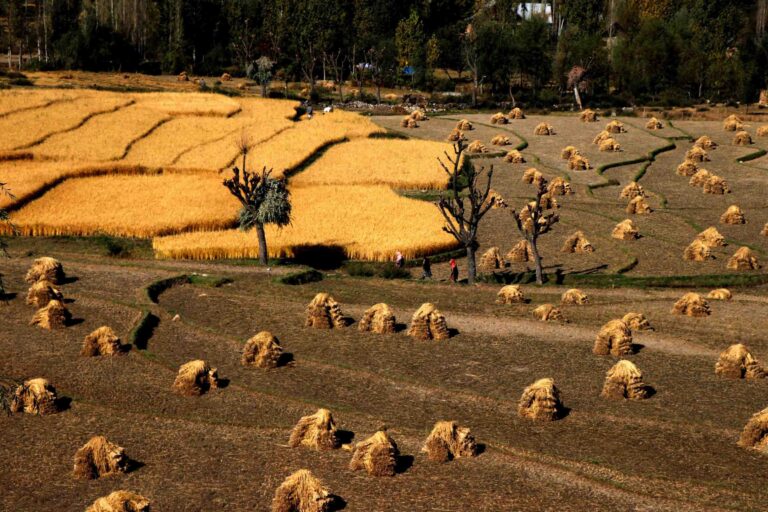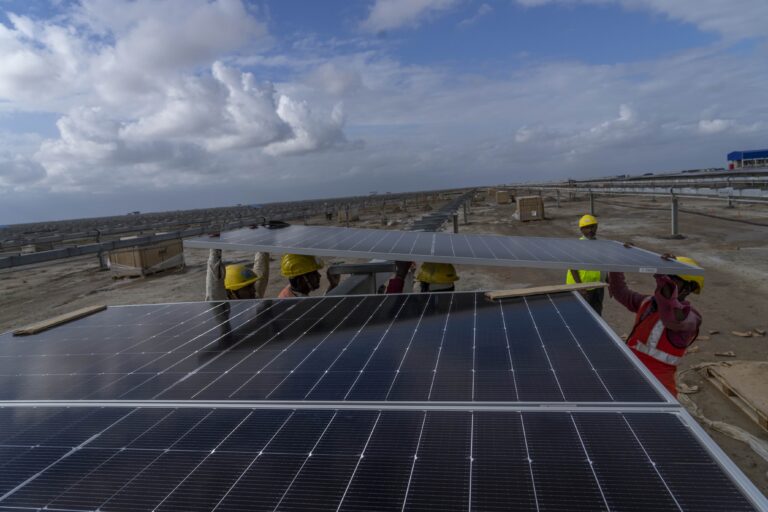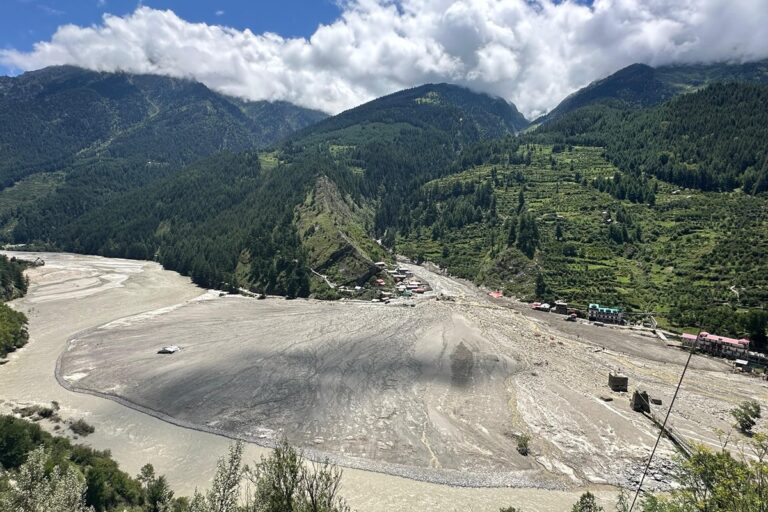- Years ago mica mines were abandoned in Jharkhand but neither the mines were restored nor the local inhabitants were rehabilitated. As a result, villagers over the years continued visiting them to extract mica.
- From sudden death owing to mines caving in or slow death because of lung ailments, the illegal mines provide for villagers’ livelihood as well as cost them dearly.
- Local activists and human right workers believe that villagers merely collect mica flakes for their livelihood whereas private contractors have been illegally mining it on a large scale in forests.
In Tisra village of Jharkhand’s mineral-rich Giridih district, about 180 kilometres north of state capital Ranchi, Shyam (name changed), a Dalit boy in his early adolescence, hustles his way through the forest area to a makeshift shop. He buys a handful of chickpeas, enough to satiate his and his older brother’s hunger after a day spent in an abandoned mica mine, which as per official records is non-operational.
In 2019, Shyam had lost a fellow villager in a mine cave-in during monsoon. The fear of death kept him from visiting the abandoned mines in the forest area for a couple of months. However, the need for money dragged him back to the rat-holes in the forest, where he and his brother spend the entire day collecting mica flakes, which is sold for Rs 20 per basket in the open market.
The incident in August 2019, to which Shyam was an eyewitness, still haunts him. However, his fellow villagers choose to let such accidents remain a secret. “Nobody died,” his older brother, who does not know his exact age, was quick to respond to Mongabay-India.
Human rights activists, who work in the area, claim that villagers do not disclose such casualties fearing that it would tighten the noose around illegal mica mining and put an end to their only source of income. Around half a dozen children, they say, might have died in mica mines in the year 2019-2020, but no first information reports were lodged with the local police station.
Koderma district’s Superintendent of Police (SP) Ehtesham Waquarib told Mongabay-India that no complaints were lodged with the police regarding casualties in mica mines since he took charge in May this year. However, Waquarib admitted that there were some stories around mica mine casualties and the police were looking into it.
Read more: [Video] Is mining in India ‘just’ for the environment and communities?
Mica: killer and provider
For the 5,000-odd poverty-stricken families of Jharkhand’s Giridih and Koderma districts, dhibra – the local term for low-quality flakes of mica – is both the provider and the killer, Rishikesh Mishra, secretary of Indian National Mines Workers Federation (INMWF), told Mongabay-India.
“Mica mining is banned from decades but several hundred villagers still risk their lives every day to extract mica from the forest areas and sell them at a throwaway price to middlemen, who export the mineral to other countries via Kolkata,” said Mishra, claiming that the illegally extracted mica from Jharkhand was primarily used in the automobile industry of China.
India is one of the world’s largest producers of mica, used in the car and building sectors, and electronics and cosmetics. Researchers note that Jharkhand produced the most superior quality of mica, which was exported to foreign countries back in the 1970s.
Mica dust is one of the major causes of tuberculosis among locals in the area. Mica miners are prone to lung ailments and the local villagers are at a higher risk owing to a lack of protective gear and awareness. Besides mine cave-in, tuberculosis and other lung ailments claim several lives here, said Kamal Nayan, a local journalist who has been writing about illegal mica mining for over a decade.
Mica mining in India dates back to the mid and late 19th century when railway tracks were being laid down in the Bengal-Nagpur zone. By the 1950s, around 700 mica mines were operational, employing approximately 24,000 people. As per the Jharkhand State Mineral Development Corporation Ltd, the total mica reserve in Jharkhand was 13,554 tonne. This includes insulation bricks and mica powder. However, the Department of Mines and Geology of the Jharkhand government puts the mica reserves and resources in Jharkhand at 0.02 million tonnes.

However, the mica mines were abandoned after the Forest Conservation Act, 1980, imposed a ban on mica mining in Jharkhand. But the ban didn’t bring any positive transition in the lives of the villagers. No actions were taken for the restoration of mines and villagers continued to visit these abandoned mines to collect mica flakes. Villagers, mostly clad in vests and half pants, enter the 5-8 feet deep rat-holes with the help of ropes and handmade bamboo platforms.
Rishikesh Mishra of the INMWF claimed that men and women, who have been frequenting mica mines for over a decade, regularly experience shortness of breath.
Read more: Kolar Gold fields: From fields of gold to a dust bowl
A demand to legalise mining
On May 29, 2020, former and first chief minister of Jharkhand wrote to the present Chief Minister Hemant Soren, asking him to revive mica mining in Koderma and Giridih areas. He said the police should not take action against locals who pick mica flakes. Marandi suggested an e-auction of these flakes and also said that it would provide employment to migrant workers who have returned to Jharkhand during the Covid-19 lockdown.
However, in wake of casualties and health hazards associated with illegal mica mining and scavenging, the government is proceeding with regularisation of mica mining in the tribal state, Jharkhand’s former mines commissioner, Aboobacker Siddique, told Reuters. Some 100 dumps of old mica mines were auctioned in 2017 under a former Bharatiya Janata Party (BJP) government in Jharkhand, he added.
“Tenders were also floated for auctioning of two mica mines, one each in Giridih and Koderma last year,” Mihir Salkar, District Mining Officer, Koderma, told Mongabay-India. However, there was no official confirmation on whether the mines found bidders or not. “There was a difference between illegal mining and picking scrap mica from abandoned mines. Villagers are mostly involved in the latter,” Salkar said.
In 2019, an alliance of Jharkhand Mukti Morcha, Congress party and Rashtriya Janata Dal toppled the Raghubar Das-led Bharatiya Janata Party government and paved way for a Hemant Soren-led alliance regime that claims to prioritise human rights over industrial growth. However, the government is yet to find an alternative source of income for the villagers, dependent on mica scavenging to meet ends, once mica mines and dumps are auctioned for commercial use.
Member of Parliament from Koderma Annapurna Devi, a former state minister, admitted that families in at least eight panchayats of Koderma were solely dependent on dhibra for their living. Devi, who has worked in the area for more than two decades, said legalising mica mining was a much-needed step as it would regulate the process and also ensure employment to villagers.
On the reports of children working at abandoned mica mines, Devi told Mongabay-India that villagers were gradually becoming aware of child rights, which has led to a fall in the number of children visiting these mines to collect mica flakes.
“If we do not legalise mica mining, then villagers will be compelled to either fell trees in forest areas and sell them or die in penury,” said Devi, adding that villagers only collected mica flakes, while illegal mining was usually done in the forest area by private contractors.
Devi said that forest officials had recently unearthed illegal mining in Sirsirwa forest of Koderma. Contractors had illegally dug 250 feet into the ground of a forest area to extract stones and complaints were also lodged against 22 individuals by police in connection with the case. “Legalising mining in the area will bring an end to such practices,” she said.

Read more: [Photos] Suffering in the town powering India’s nuclear dreams
Experts fear commercial mica mining may prove to be hazardous
Environmentalists are afraid that commercial mica mining may prove to be hazardous to the environment as almost all of Jharkhand’s mica mines are in the forest areas.
Nitish Priyadarshi, an environmentalist who has researched extensively on the Koderma region, told Mongabay-India that there should be an evaluation of the effect of mining on the environment before the government restarts mica mining as it would show its effect on the forest cover, water level and quality of air.
The regularisation of mica mining, activists say, is also unlikely to stop child labour at mining sites as coal mines still attract children and women despite being regulated and run by Coal India Limited. “Children still collect coal from mining areas and sell them in the market and if illegal scavenging of coal couldn’t be stopped, how can you expect mica scavenging to stop after legalisation,” argued Rishikesh Mishra.
Read more: [Photos] The rich Hasdeo Arand on the road to become a ravaged Korba?
(The author is a Jharkhand-based freelance reporter and a member of 101Reporters.com, a pan-India network of grassroots reporters.)
Banner image: Illegal mica mining is still prevalent in Koderma and Giridih districts of Jharkhand. Photo by special arrangement.













